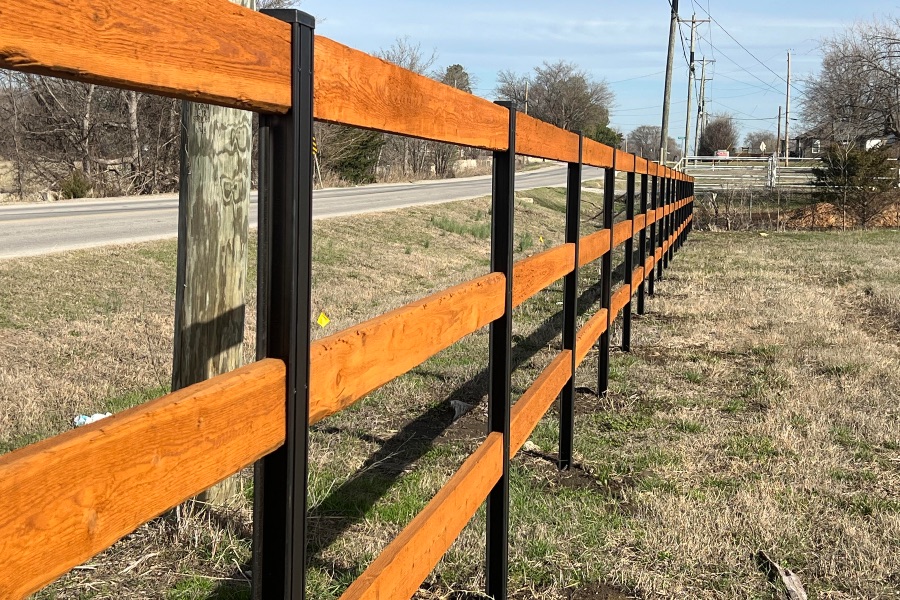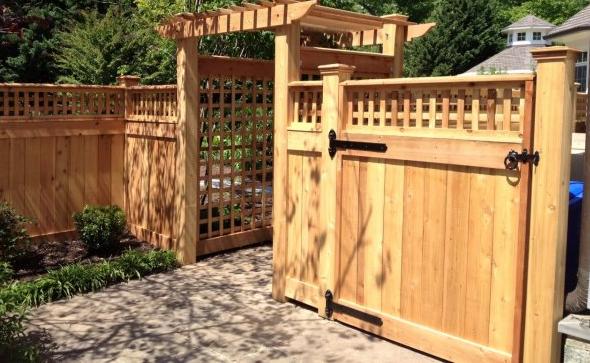All Categories
Featured
Identifying when a fencing requires replacing can save you from expensive fixings down the road and prevent potential safety dangers. Below are several signs that may suggest it's time to replace your fencing.
Over time, fencings can incur damage from storms, fallen trees, or crashes. While small damages like little damages or missing nails can be taken care of with an easy repair work, extensive damage such as big cracks, splits, or sections that are broken past repairing may suggest it's time to change the whole fencing. If you've currently attempted multiple repair services and the damages keeps persisting, a new fence may be the far better financial investment.
![]()
Pests and bugs like termites, carpenter ants, and rodents can create substantial damages to wood fencings. If the problem has spread out, changing the fencing might be the only alternative to ensure your home is protected.
![]()
The fence posts are the foundation of your fence, supporting its whole structure. If the messages end up being loosened, unstable, or begin to move in the ground, the fencing's strength and security will certainly be compromised. In some circumstances, individual messages can be replaced, yet if several blog posts are unstable or leaning, changing the entire fencing might be much more sensible. A sagging or unsteady fence is not only undesirable but additionally a security threat.
Fences can last anywhere from 10 to thirty years, relying on the products made use of. Nevertheless, even the toughest fencing will ultimately reveal indications of wear and deterioration. If your fence is older and revealing substantial indications of aging-- such as discolored paint, severe weathering, or persistent repair work-- it might be a lot more affordable to change it instead of remaining to spot it up. An older fencing likewise might not satisfy current building regulations or safety criteria, particularly in areas where policies have actually transformed in time.
Rot is an usual problem with wood fencings, particularly in moist or wet environments. Timber can take in dampness, leading to mold and mildew, rot, or mildew growth, which deteriorates the material and makes it susceptible to collapse. If a section of your wood fencing is soft to the touch, tarnished, or has a moldy scent, it might be a sign that rot has actually embeded in. Sometimes, a few planks or areas can be changed, but if the rot prevails, it's frequently better to change the entire fence.
If your fencing frequently calls for upkeep-- whether that's discoloration, changing individual slats, or tightening fasteners-- it can be an indication that the fence is nearing the end of its life. If you discover yourself regularly preserving a fencing that no longer looks or functions as it should, it might be time for a full substitute.
Over the years, fencings can start to lose their aesthetic appeal as a result of weathering, fading, or physical damage. A fence that was when vivid may transform grey, end up being distorted, or start leaning. While some cosmetic concerns can be remedied with a brand-new coat of paint or tarnish, other troubles might be also serious to fix. If your fence has actually ended up being an eyesore that takes away from your residential property's aesthetic appeal, replacing it can improve the appearance of your home and increase its value.
Possibly one of one of the most vital reasons to replace a fencing is if it has actually ended up being a security worry. Whether as a result of decaying messages, leaning, or harmed elements, a fencing that no more performs its intended feature-- such as keeping youngsters or animals risk-free-- can be a liability. A fence that's unsteady or endangered in any method postures a risk of collapse or injury. Making certain that your fencing is durable and safe is crucial for both assurance and the health of your family members.
Final Thought
Recognizing when it's time to replace your fence can prevent security dangers, reduce recurring fixings, and conserve you cash in the lengthy run. If your fencing shows signs of extensive damages, decomposing, pest infestation, or age-related wear, it's time to think about a replacement.
- Damage Irreparable
Over time, fencings can incur damage from storms, fallen trees, or crashes. While small damages like little damages or missing nails can be taken care of with an easy repair work, extensive damage such as big cracks, splits, or sections that are broken past repairing may suggest it's time to change the whole fencing. If you've currently attempted multiple repair services and the damages keeps persisting, a new fence may be the far better financial investment.
- Pest Invasion

Pests and bugs like termites, carpenter ants, and rodents can create substantial damages to wood fencings. If the problem has spread out, changing the fencing might be the only alternative to ensure your home is protected.
- Unpredictable Fencing Posts

The fence posts are the foundation of your fence, supporting its whole structure. If the messages end up being loosened, unstable, or begin to move in the ground, the fencing's strength and security will certainly be compromised. In some circumstances, individual messages can be replaced, yet if several blog posts are unstable or leaning, changing the entire fencing might be much more sensible. A sagging or unsteady fence is not only undesirable but additionally a security threat.
- Age of the Fence
Fences can last anywhere from 10 to thirty years, relying on the products made use of. Nevertheless, even the toughest fencing will ultimately reveal indications of wear and deterioration. If your fence is older and revealing substantial indications of aging-- such as discolored paint, severe weathering, or persistent repair work-- it might be a lot more affordable to change it instead of remaining to spot it up. An older fencing likewise might not satisfy current building regulations or safety criteria, particularly in areas where policies have actually transformed in time.
- Substantial Rot or Mold And Mildew Growth
Rot is an usual problem with wood fencings, particularly in moist or wet environments. Timber can take in dampness, leading to mold and mildew, rot, or mildew growth, which deteriorates the material and makes it susceptible to collapse. If a section of your wood fencing is soft to the touch, tarnished, or has a moldy scent, it might be a sign that rot has actually embeded in. Sometimes, a few planks or areas can be changed, but if the rot prevails, it's frequently better to change the entire fence.
- Constant Maintenance Demands
If your fencing frequently calls for upkeep-- whether that's discoloration, changing individual slats, or tightening fasteners-- it can be an indication that the fence is nearing the end of its life. If you discover yourself regularly preserving a fencing that no longer looks or functions as it should, it might be time for a full substitute.
- Visual Decline
Over the years, fencings can start to lose their aesthetic appeal as a result of weathering, fading, or physical damage. A fence that was when vivid may transform grey, end up being distorted, or start leaning. While some cosmetic concerns can be remedied with a brand-new coat of paint or tarnish, other troubles might be also serious to fix. If your fence has actually ended up being an eyesore that takes away from your residential property's aesthetic appeal, replacing it can improve the appearance of your home and increase its value.
- Safety Worries
Possibly one of one of the most vital reasons to replace a fencing is if it has actually ended up being a security worry. Whether as a result of decaying messages, leaning, or harmed elements, a fencing that no more performs its intended feature-- such as keeping youngsters or animals risk-free-- can be a liability. A fence that's unsteady or endangered in any method postures a risk of collapse or injury. Making certain that your fencing is durable and safe is crucial for both assurance and the health of your family members.
Final Thought
Recognizing when it's time to replace your fence can prevent security dangers, reduce recurring fixings, and conserve you cash in the lengthy run. If your fencing shows signs of extensive damages, decomposing, pest infestation, or age-related wear, it's time to think about a replacement.
Latest Posts
The Benefits of Regular Car Maintenance at Montclare Auto Repair Reduces Costs
Published Jun 01, 25
1 min read
Protect Your Home with Quality Residential Roof
Published May 25, 25
1 min read
How to Know When Your Car Needs Professional Auto Repair at Montclare Auto Repair
Published May 22, 25
1 min read